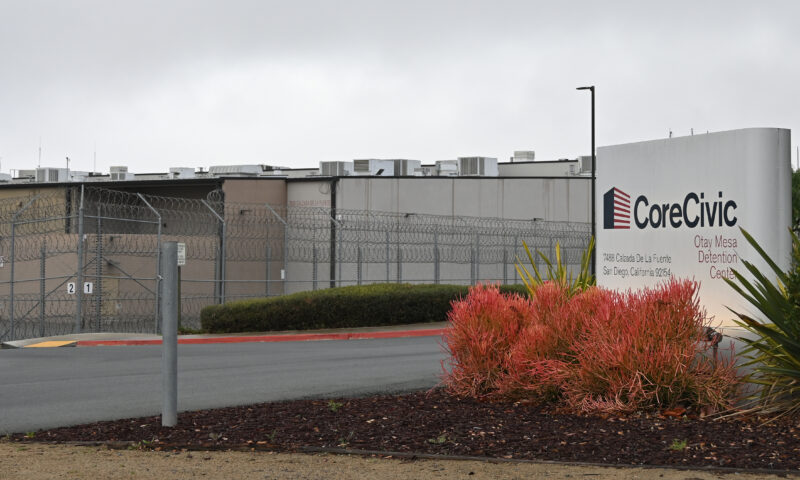Labor & Economy
Private Control of Public Services Requires Extra Care

Across the nation, private companies are looking to take over public services. A legislative battle in Sacramento over a bill to privatize state trial courts epitomizes the promises and pitfalls of privatization.
Assembly Bill 566 (Wieckowski, D-Fremont) would require that before contracting services out, courts must provide proof of cost savings, create employment standards, engage in a competitive bidding process and undergo regular financial and performance audits. The bill now sits on the governor’s desk for signature or veto, and the lobbying on both sides is intense.
As in most debates over outsourcing of public services, its opponents’ central claim is that privatizing essential courtroom services such as court reporting, processing cases, probate investigations and interpretive services, saves dollars.
Yet the track record on privatization of public services and assets is decidedly mixed. Public agencies that hire private companies without strong mechanisms of accountability, transparency, rigorous evaluations of contracting costs and standards have learned this the hard way.
Courts, like most branches of government, have faced years of deep budget cuts, and the siren song of promised savings with no loss of services is understandably appealing. But taxpayers should be skeptical: If it sounds too good to be true, it probably is. In fact, in 2007 the Government Finance Officers Association looked at the question of savings promised by privatizing public services and concluded that hidden and indirect costs can add up to 25 percent to the contract price.
Underbidding, cost overruns, fee increases and contract “change orders” or amendments are typical results of poorly planned and poorly executed outsourcing and it takes highly skilled personnel with expertise in private contract management to protect taxpayers and ensure high quality public services. Too often, especially in this era of reduced staffing, such oversight is simply not available.
One of California’s most spectacular examples of this comes directly from the judicial branch: the central bureaucracy’s case management IT project. A state audit found that the agency “failed to develop accurate cost estimates — in 2004 the cost estimate was $260 million and by 2010 the estimated cost was $1.9 billion.” With more than 100 contract amendments, basic management lapses and underreporting of costs, it has become the poster child of government mismanagement of private contractors in California.
But we should be more precise about the lessons to be learned from this debacle. It was a fundamental failure of the agency to adhere to best management practices that rely on strong accountability, transparency and oversight taxpayer protections. The state audit found that the Administrative Office of the Courts had not adequately analyzed and planned the system, hadn’t accurately estimated costs, kept the legislature in the dark about cost overruns, failed to control costs during implementation and didn’t establish adequate oversight mechanisms — the fundamentals of good management and the exact safeguards now being proposed for trial courts.
A second reason to be skeptical of the “same for less” promises made to justify privatization of public services is the track record that many private companies have in providing services. Companies often save money by cutting corners in unacceptable ways — reducing access to services or offering worse services. USIS, the federal contractor responsible for the sloppy background security checks that made possible the mass shooting at the Washington Navy Yard D.C., was found to have told managers to “flush” cases to meet revenue goals. In the waning days of one month, investigations were closed to meet financial quotas, without a required review by the quality control department.
Transit riders in the city of Fairfield, halfway between San Francisco and Sacramento, learned the hard way about the pitfalls of outsourcing done poorly. MV Transportation, the private contractor hired by the local transit agency, was fined 295 times between 2008 and 2010 for exceeding the allowable preventable accident rate, for failing to meet agreed upon arrival times and for buses that failed to show at all.
The transit manager at the time, George Fink, summed up his experience with outsourcing. “If you had a contractor that wanted to run the business and not maximize their profit at every turn, then it would be fine,” Fink said. “As it tends to work out, you’re spending 85 percent of the time making sure that they’re doing everything in the contract instead of doing the things you need to be doing, like getting grant money doing transit planning.”
Finally, there are policy considerations that must be weighed and that require thorough, public vetting before contracts are entered into. For example, when states privatize their prisons, many contracts include “occupancy guarantees” of 80 to 100 percent that require states to keep the beds filled or pay for empty beds. Private highways and toll roads, such as California’s State Route 91, often require that no upgrades be made to other competing transportation routes. SR 91 ultimately came back under public control for that very reason. In the case of courts, privacy and access to justice for the poor are potentially compromised in a privatized court environment.
Privatization is inherently neither a good nor a bad thing. It has potential upsides and downsides that depend entirely on the need for legislators to protect taxpayers and the public interest to stay in charge through clear standards, accountability and transparency. AB 566 deserves a signature.
(This article first appeared on Huffington Post and is republished with permission.)

-

 Latest NewsJune 17, 2025
Latest NewsJune 17, 2025A Coal Miner’s Daughter Takes on DOGE to Protect Miners’ Health
-

 Beyond the BorderJune 10, 2025
Beyond the BorderJune 10, 2025Detained Man Says ICE Isn’t Treating His Colon Cancer
-

 Column - State of InequalityJune 5, 2025
Column - State of InequalityJune 5, 2025Budget Cuts Threaten In-Home Assistance Workers and Medi-Cal Recipients
-

 Column - State of InequalityJune 12, 2025
Column - State of InequalityJune 12, 2025‘Patients Will Suffer. Patients Will Die.’ Why California’s Rural Hospitals Are Flatlining.
-

 Column - California UncoveredJune 18, 2025
Column - California UncoveredJune 18, 2025Can Gov. Gavin Newsom Make Californians Healthier?
-

 Featured VideoJune 10, 2025
Featured VideoJune 10, 2025Police Violently Crack Down on L.A. Protests
-

 Latest NewsJune 4, 2025
Latest NewsJune 4, 2025Grace Under Fire: Transgender Student Athlete AB Hernandez’s Winning Weekend
-

 Striking BackJune 3, 2025
Striking BackJune 3, 2025In Georgia, Trump Is Upending Successful Pro-Worker Reforms

